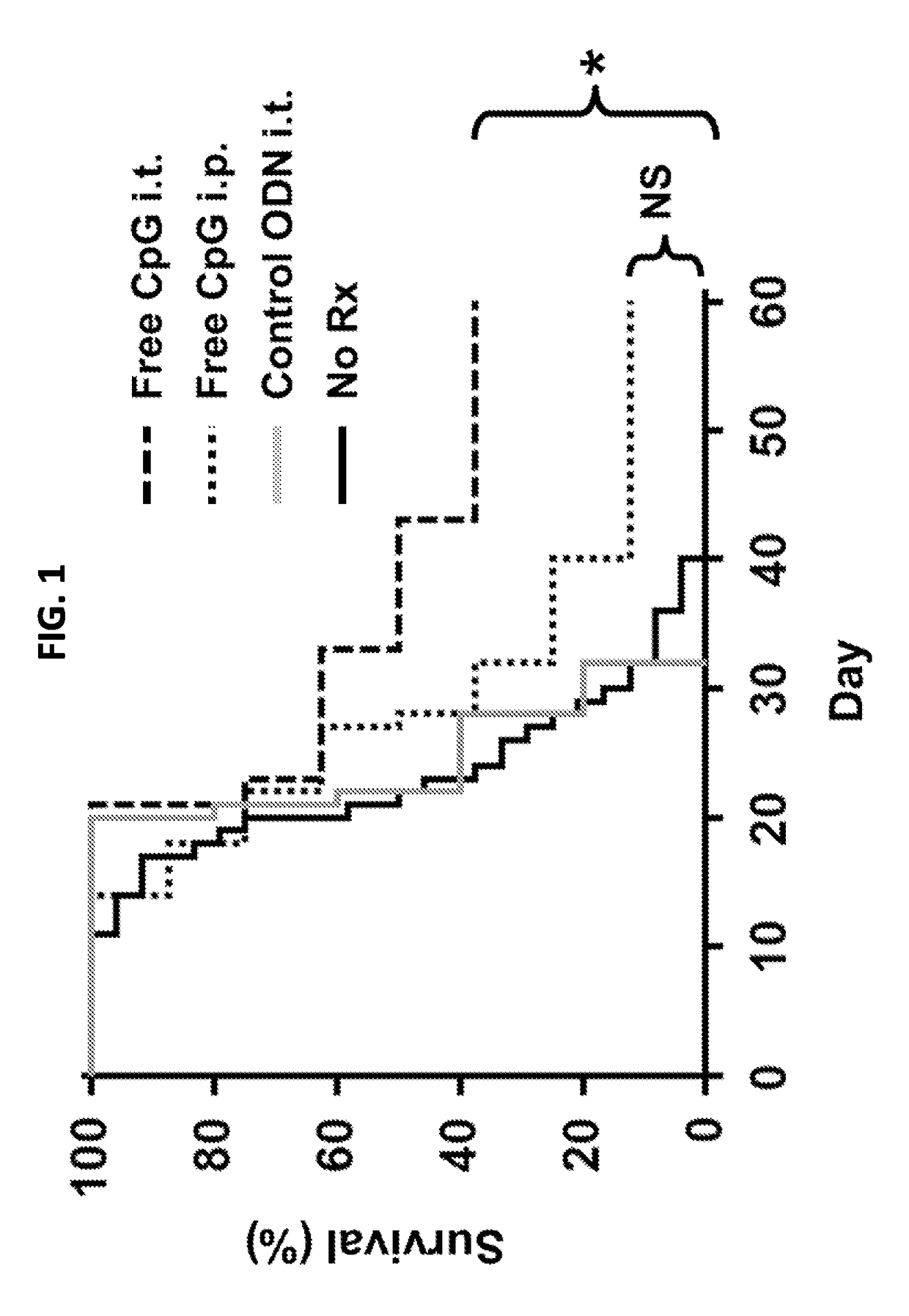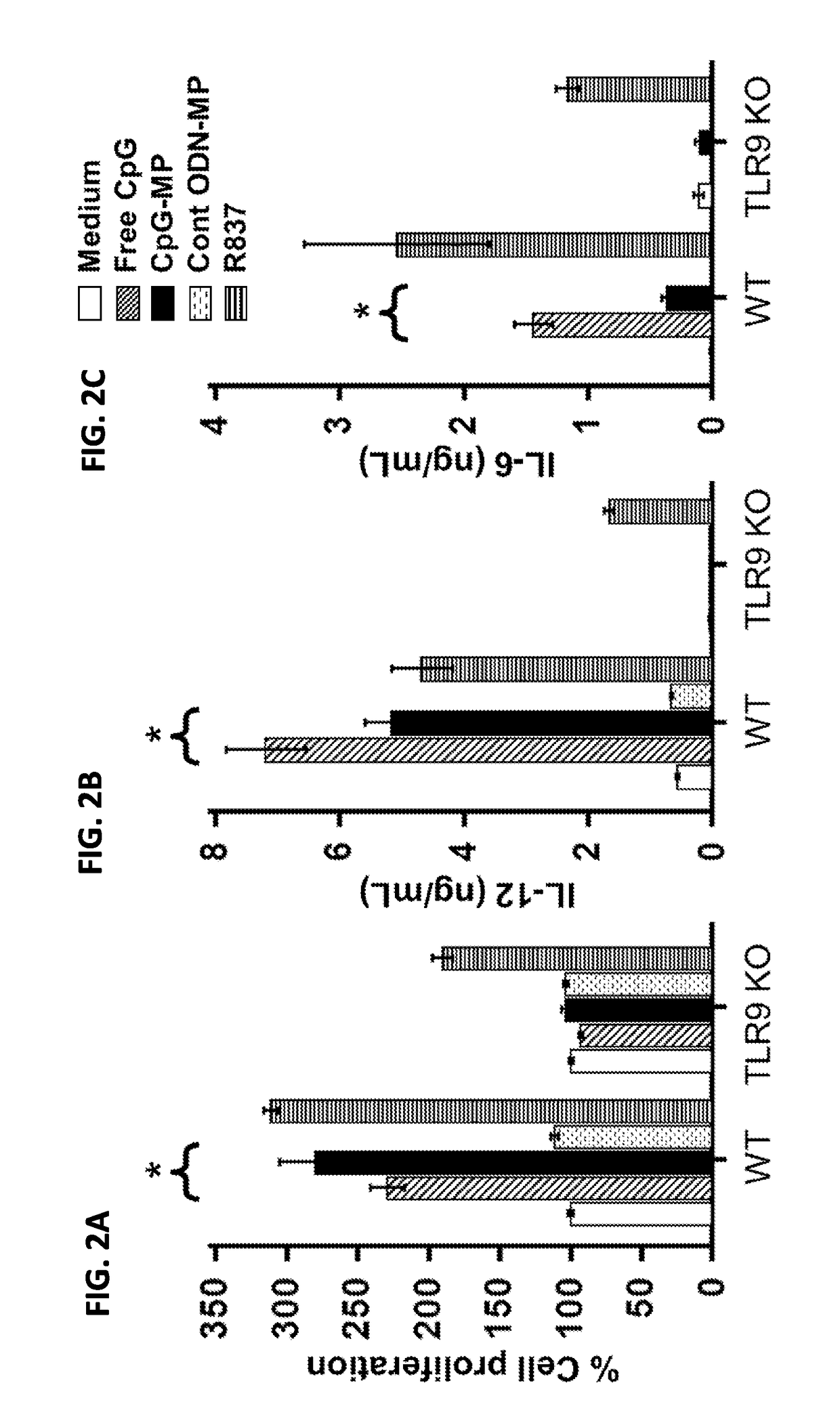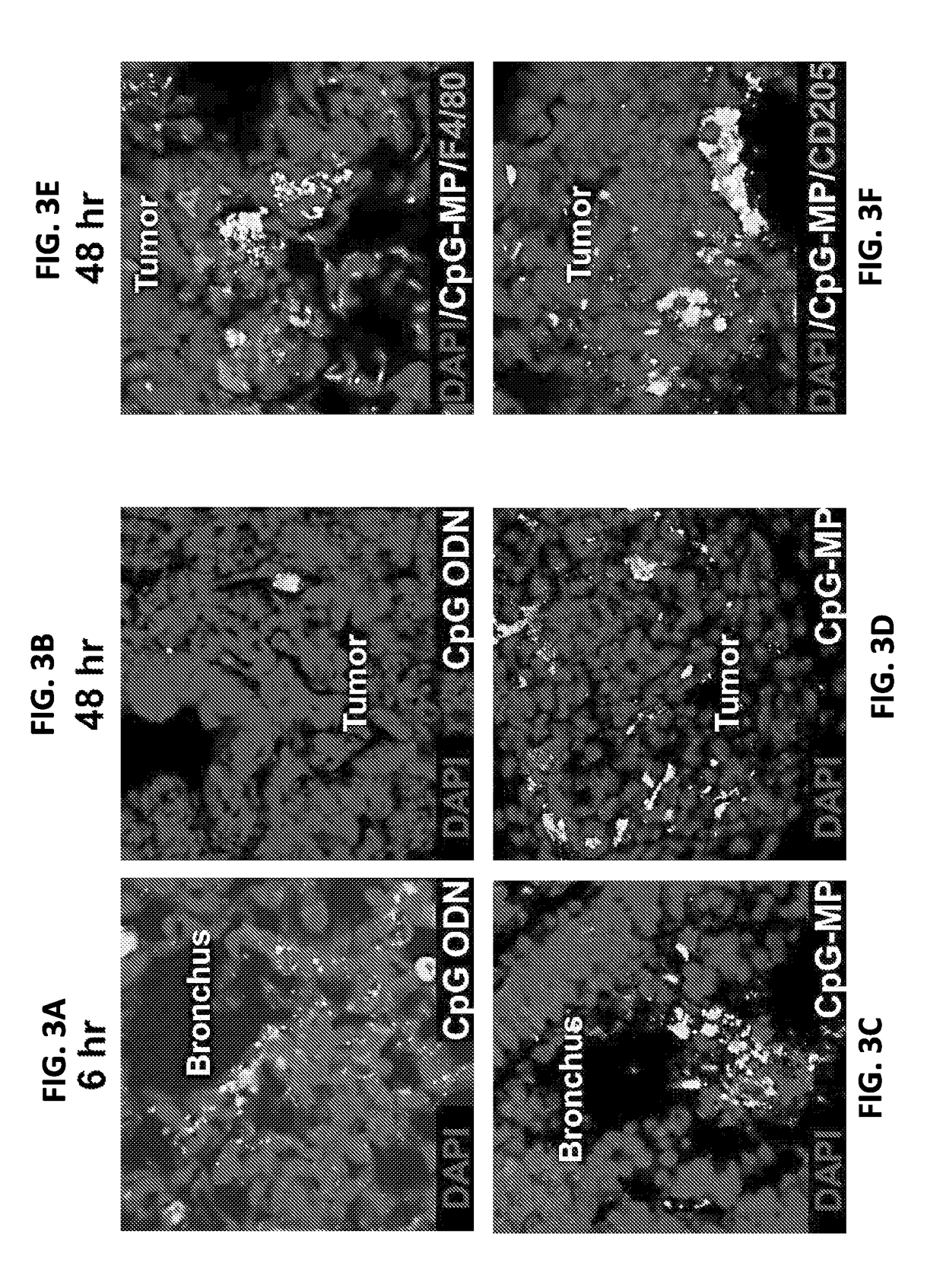Polyketal particles including a CpG oligodeoxynucleotide for the treatment of lung cancer
a technology of polyketal particles and oligodeoxynucleotides, applied in the field of cancer, can solve the problems of poor immunogenicity of lung tumors and resistance to immune surveillance, and achieve the effect of improving the efficiency of delivery to the lungs
- Summary
- Abstract
- Description
- Claims
- Application Information
AI Technical Summary
Benefits of technology
Problems solved by technology
Method used
Image
Examples
example 1
Materials and Methods
[0230]Preparation of Polyketal Nanoparticle (NP): The poly-(1,4-phenyleneacetone dimethylene ketal) matrix of the nanoparticles was synthesized by Celagix Res Ltd. (Yokohama, Japan). Polyvinylalcohol (PVA, Sigma, St. Louis, Mo.) was used as a dispersing agent. Polyketal NP were produced via an acetal exchange reaction as previously described (Heffernan M J. Bioconjugate Chem 2005; 16:1340, Heffernan M J. Biomaterials 2009; 30:910). Briefly, 1,4-benzenedimethanol (10 g, 36 mmol) and 1,5-pentanediol (1.8 g, 8.67 mmol) were dissolved in ethyl acetate and added to the 100 mL of methylbenzene. Recrystallized p-toluenesulfonic acid (520 mg, 2.93 mmol) in 1.0 mL of ethyl acetate was then added followed by 2,2-dimethylpropane (9 mL, 37 mmol) to initiate the reaction. Additional 2,2-dimethylpropane (9 mL, 37 mmol) and methylbenzene were added to the reaction every 30 min for 2 h. After 12 h, the polymer was isolated by precipitation in ice cold hexane (−20° C.) followed ...
example 2
Effect of CpG ODN on the Growth of Pulmonary Tumors
[0245]A murine model of NSCLC was used to evaluate the anti-tumor activity of locally vs systemically administered CpG ODN. 106 Lewis lung cancer (LLC) cells were instilled into the lungs of syngeneic C57BL / 6 mice. As expected from previous studies, these cells proliferated and formed peri-bronchial tumors resembling those found in patients with primary lung cancer (FIG. 9).
[0246]Mice challenged with LLC had a median survival time of 22 days (FIG. 1). Systemic (i.p.) delivery of CpG ODN conferred a modest but statistically insignificant survival benefit (HR: 0.55; 95% CI, 0.24-1.26; p=0.11). In contrast, median survival time improved to 38 days (HR: 0.28; 95% CI, 0.13-0.59; p=0.01) when 50 μg of CpG ODN was delivered via the intra-tracheal (i.t.) route directly into the lungs (FIG. 1). This effect was sequence specific, as control ODN had no effect.
[0247]While local delivery of CpG ODN was superior to systemic administration, most m...
example 3
CpG-NP Activates Immune Cells In Vivo
[0250]CpG-NP was delivered into the lungs of normal mice via intra-tracheal catheter. BAL fluid was collected 2 days later. The BAL of mice treated with saline contained on average 4×104 cells / ml. In animals treated with free CpG ODN cellularity rose by≈25% (p4 cells / ml (p<0.01, FIG. 4A). This increased cellular infiltrate consisted primarily of macrophages and lymphocytes. Consistent with previous studies, CpG ODN alone triggered a significant increase in pulmonary IL-12 levels, an effect magnified nearly 12-fold by CpG-NP (FIG. 4B). None of these changes was observed in mice treated with control ODN-NP.
PUM
| Property | Measurement | Unit |
|---|---|---|
| diameter | aaaaa | aaaaa |
| diameter | aaaaa | aaaaa |
| diameter | aaaaa | aaaaa |
Abstract
Description
Claims
Application Information
 Login to View More
Login to View More - R&D
- Intellectual Property
- Life Sciences
- Materials
- Tech Scout
- Unparalleled Data Quality
- Higher Quality Content
- 60% Fewer Hallucinations
Browse by: Latest US Patents, China's latest patents, Technical Efficacy Thesaurus, Application Domain, Technology Topic, Popular Technical Reports.
© 2025 PatSnap. All rights reserved.Legal|Privacy policy|Modern Slavery Act Transparency Statement|Sitemap|About US| Contact US: help@patsnap.com



